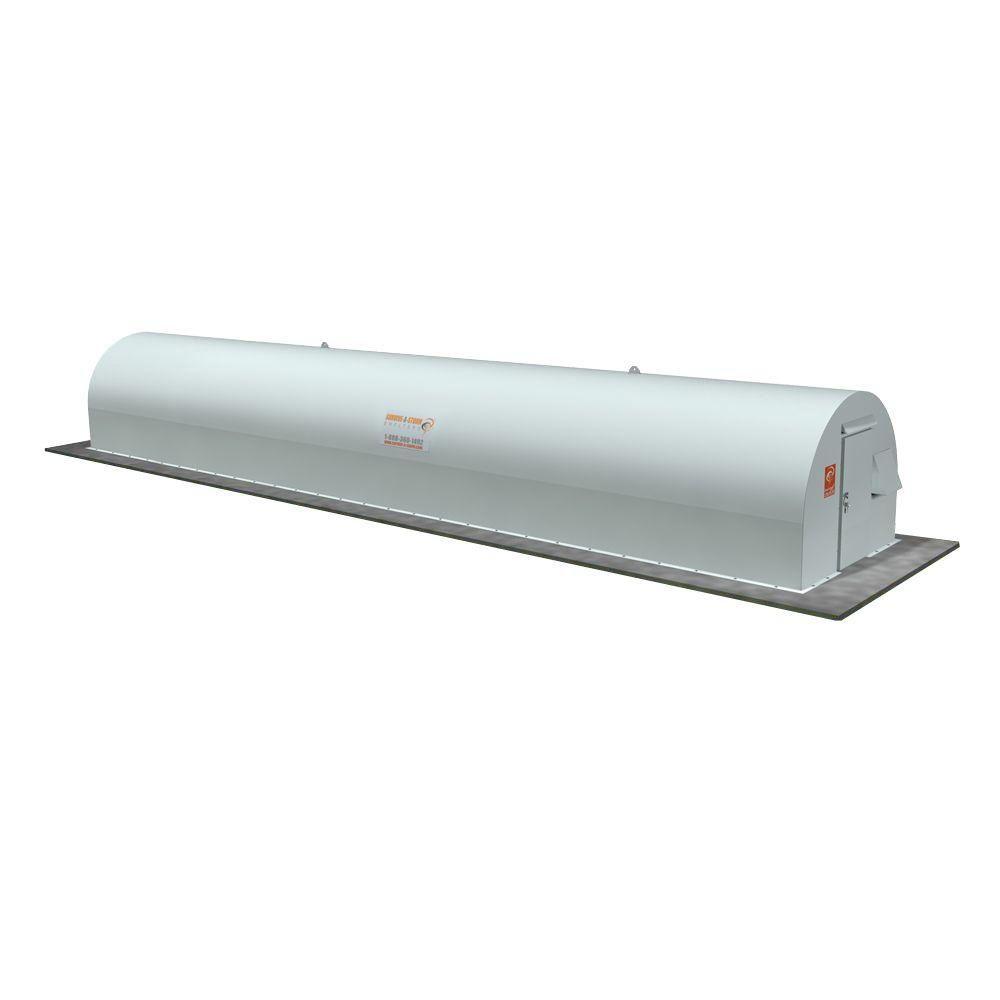

- #LEAKING METAL STORM SHELTER CRACKED#
- #LEAKING METAL STORM SHELTER INSTALL#
- #LEAKING METAL STORM SHELTER FREE#
Don’t make the mistake of thinking that concrete is the way to go for storm shelters.
#LEAKING METAL STORM SHELTER FREE#
Steel storm shelters are maintenance free and built to be much stronger than concrete shelters.

Steel will expand and contract with the changing temperatures ensuring that it will last for generations to come. Starting with steel fabrication will ensure that your shelter is never affected by leaks, moisture, cracking or mold. This is another point of potential failure in these shelters.Ĭoncrete has many strengths and is a great material to have at our disposal, but make no mistake there are better materials to use for underground purposes. So to clarify – the unit is fabricated with a large seam that wraps around the entire shelter. These units are essentially 2 pieces (top and bottom) that are connected by metal brackets.

Moisture and mold are two things any shelter owner dreads and combats.Īdditionally, the concrete storm shelters used today are basically modified septic tanks. As moisture collects and dry over and over – mold can start to appear. Moisture will soon start to seep into the shelter from the surrounding earth. After the concrete is cracked, new problems quickly follow. Because of concrete’s rigid nature, the subsequent result of shifting earth is cracking. This puts incredible force and added pressure on any buried structure. We also have one of the largest powder coating ovens in the country and this means that you will be receiving a quality steel shelter evenly coated to eliminate two things.As temperatures fluctuate in the earth, the ground swells and contracts. At Extreme Storm Shelters, we design all of our steel shelters based on a proprietary leak test to guarantee that none of our units will ever leak. Our dedicated welders are one-of-a-kind and make sure each unit meets FEMA standards before it leaves our factory. Our team members care about the safety of you and your family so that means from start to finish we pay attention to detail. Survive-a-Storm steel safe rooms and storm shelters are constructed using the highest grade American steel. One of many steel shelters by Survive-a-Storm Shelters. People are choosing steel shelters instead. If the doors are in good condition, glue rubber gaskets around the perimeter to provide a better seal. Step 2 Check the storm cellar doors for leaks. If it's clogged or leaks, the water can flow down onto the entrance of the storm cellar or the surrounding area and leak into the structure. Here at Survive-a-Storm we know the main one. Step 1 Examine the gutter if it runs over the storm cellar. This downward shift in the use of concrete could be for many reasons. The exterior is coated with our specially blended epoxy coating providing an added. Gelcoat is one of the toughest and most durable coatings available and is often exposed to the harshest conditions (marine power boats, yachts, jet skis, etc.) It is smooth, easy to clean and highly reflective. Features: Steel angled staircase with grip tape and handrail. Ideally, the slope of the soil should be at least a 6-inch drop for every 10 feet away from the opening of the storm cellar. That’s a noticeable drop from 1992 when 38 percent of homes were listed as having them. Our shelters come with a white gelcoat interior. The right grade forces water to flow away from the storm cellar. Stack bags of dirt to make a suitable storm shelter to use in an emergency. Build a cinder block root cellar to use as an underground bunker. A plastic water tank can also be used as an underground emergency shelter. Made from 100 steel you will never have to worry about cracking, crumbling, or leaking. A 500-gallon fuel tank is large enough to use as an emergency shelter for your family. Only 28 percent of new homes had new or partial basements in 2009. Engineered to withstand EF5 tornado winds (250+ mph). Seven children died after seeking shelter in Plaza Towers Elementary School during the Moore, Oklahoma tornado in May 2013. Homes with concrete basements are on the decline. There have been tragic cases of above ground concrete rooms collapsing and killing people inside them. Times have changed and so have people’s choices.

#LEAKING METAL STORM SHELTER INSTALL#
Many people chose to install above ground concrete rooms in their homes or build a basement out of it.
#LEAKING METAL STORM SHELTER CRACKED#
But I only know two kinds of concrete: concrete that’s cracked and leaks and concrete that is going to crack and leak.”Ĭoncrete was once thought of as the ultimate in safe room and storm shelter protection. “Well, I understand that concrete may be cheaper. So when it comes to his opinion on concrete storm shelters, Calvin doesn’t shy away from his answer. He loves helping people and he loves telling people what he thinks about things. Calvin Cannon, Survive-a-Storm’s Oklahoma City tornado and storm expert, has a witticism on almost every subject.


 0 kommentar(er)
0 kommentar(er)
